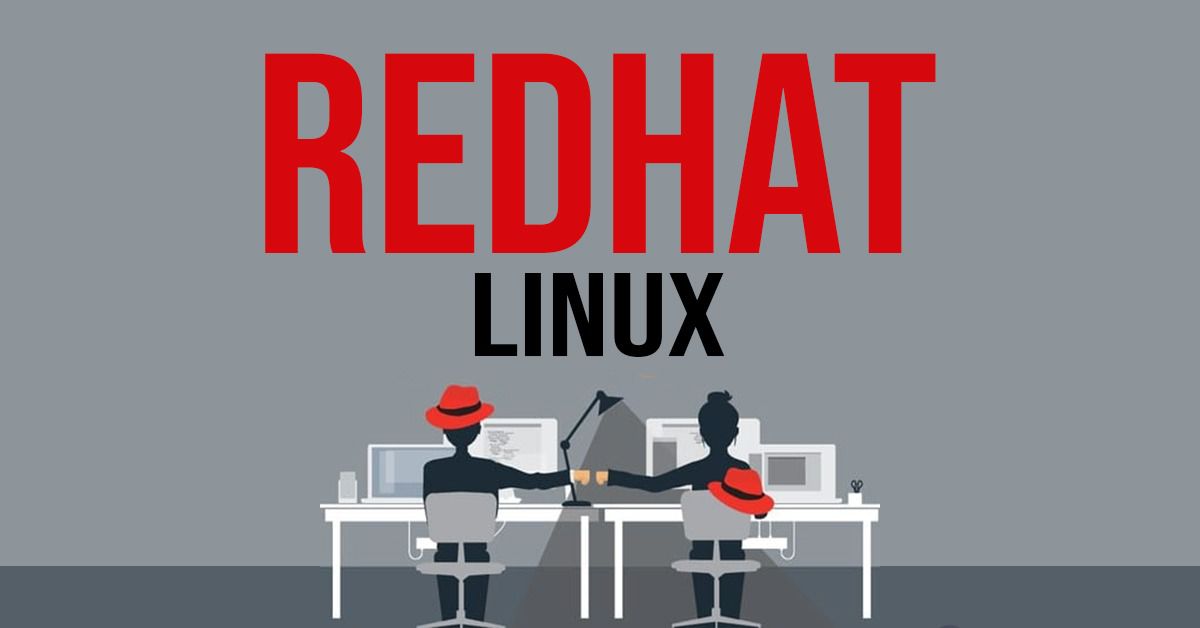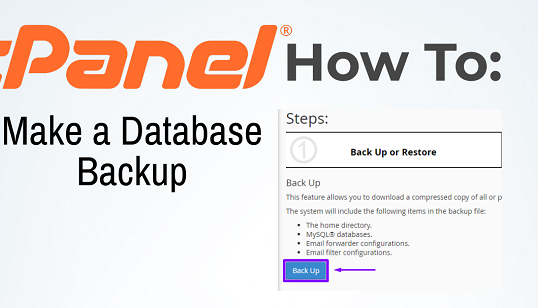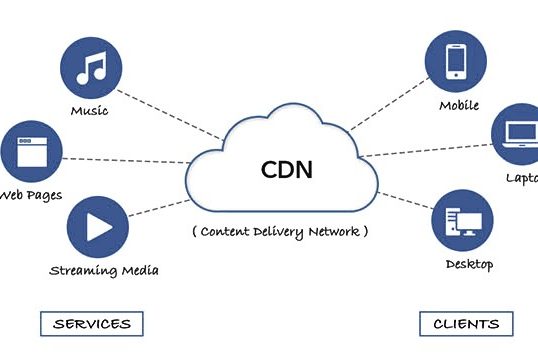
Table of Contents
Red Hat Linux VPS

A Red Hat Linux VPS (Virtual Private Server) is a virtualized server environment that runs Red Hat Enterprise Linux (RHEL) as its operating system. A Red Hat Linux VPS (Virtual Private Server) is a cloud-based, virtual server environment that runs on Red Hat Enterprise Linux (RHEL), a trusted, enterprise-level Linux distribution.
Offering users dedicated resources on a shared physical server, it combines the flexibility of a virtual machine with the stability, security, and support of Red Hat Linux. Commonly used for hosting applications, web servers, and databases, a Red Hat Linux VPS is ideal for businesses needing a reliable, scalable solution backed by Red Hat’s support and frequent security updates. This setup offers users a flexible and secure Linux-based server that can be configured and managed according to specific needs.
Here’s a breakdown of key points:
- Red Hat Enterprise Linux (RHEL): RHEL is a robust, enterprise-grade version of Linux, maintained by Red Hat, and known for its stability, security, and support for business applications. It’s designed to meet the needs of businesses and offers long-term support, which makes it popular in industries where reliability is critical.
- VPS (Virtual Private Server): A VPS is a virtualized server hosted on a physical machine, but it operates independently. Users get their own isolated environment, meaning they have root access and can configure the system to their needs without interference from other users on the same hardware.
- Benefits of Red Hat VPS:
- Flexibility: You can install, configure, and run a wide variety of applications.
- Scalability: A VPS is typically easy to scale as your requirements grow, with options to add resources like CPU, RAM, or storage.
- Security and Support: RHEL offers enterprise-grade security updates and support options, often with Service Level Agreements (SLAs) for enterprises needing reliable support.
- Uses of Red Hat VPS: Common for hosting web servers, databases, development environments, and business applications that require a stable Linux environment with support options.
In summary, a Red Hat Linux VPS provides a reliable, scalable, and customizable environment for running applications on a Red Hat Enterprise Linux-based system.
Applications of RedHat Linux VPS

Red Hat Enterprise Linux (RHEL) is widely used across various industries and supports numerous applications due to its stability, security, and scalability. Here are some primary applications of RHEL:
1. Web and Application Hosting
- RHEL is commonly used to host web servers, application servers, and content management systems (CMS) such as WordPress, Joomla, and Drupal.
- It supports popular web servers like Apache, Nginx, and database systems like MySQL, MariaDB, and PostgreSQL.
2. Enterprise Business Applications
- RHEL is ideal for deploying enterprise applications such as SAP, Oracle databases, and Customer Relationship Management (CRM) systems.
- Its stability and support make it a good fit for enterprise resource planning (ERP) solutions where reliability is critical.
3. Database Management
- Often used for high-performance database management systems (DBMS), RHEL supports MySQL, PostgreSQL, Oracle Database, MongoDB, and others.
- It’s a preferred choice for large-scale databases requiring consistent performance and security.
4. Development and Testing Environments
- RHEL provides a stable environment for software development and testing, supporting many languages and frameworks such as Python, Java, C++, and Ruby.
- Many organizations use RHEL for DevOps, CI/CD (Continuous Integration/Continuous Deployment), and containerized development.
5. Cloud and Virtualization
- RHEL supports cloud and virtualization platforms, making it popular for running workloads in cloud environments like AWS, Azure, and Google Cloud.
- It also works well with KVM (Kernel-based Virtual Machine), OpenStack, and Red Hat Virtualization for private or hybrid cloud infrastructures.
6. Containerized Applications and Microservices
- RHEL is optimized for container workloads, making it suitable for running containerized applications using Docker or Podman.
- It also integrates with Kubernetes and OpenShift for managing large-scale, containerized applications and microservices.
7. Security and Compliance Applications
- RHEL offers extensive security features, making it suitable for applications requiring strict compliance standards, such as finance and healthcare.
- Security features include SELinux (Security-Enhanced Linux), regular security updates, and compliance with frameworks like PCI-DSS, HIPAA, and FedRAMP.
8. Big Data and Analytics
- RHEL is used to support big data platforms like Hadoop and Apache Spark, which require reliable and scalable operating systems.
- It’s also popular for data science and machine learning environments where data processing and analysis require robust performance.
9. Internet of Things (IoT)
- RHEL is used for IoT applications in sectors like manufacturing, retail, and automotive, supporting devices that require secure and consistent software environments.
10. Artificial Intelligence and Machine Learning
- With optimized libraries and support for GPU processing, RHEL is a solid foundation for AI and ML applications, particularly in cloud environments or dedicated hardware setups.
In summary, RHEL’s versatility, security, and performance make it suitable for a wide array of applications, from traditional web hosting to advanced AI, big data, and IoT deployments.
Advantages of RedHat Linux VPS
A Red Hat Linux VPS provides several advantages, especially for businesses and developers seeking a secure, reliable, and scalable server environment. Here are the key benefits:
1. Enterprise-Grade Stability and Reliability
- RHEL is known for its robust stability and reliability, designed specifically for enterprise environments. This makes it ideal for applications that require high uptime and consistent performance.
2. Enhanced Security
- Red Hat provides regular security patches and updates, ensuring that the system is protected against vulnerabilities.
- Features like SELinux (Security-Enhanced Linux) add an extra layer of protection, helping meet compliance standards in industries like finance, healthcare, and government.
3. Comprehensive Support and Documentation
- Red Hat offers dedicated support and extensive documentation, which is a huge advantage for businesses requiring assistance for critical applications.
- Support includes 24/7 assistance, troubleshooting, and updates, often with Service Level Agreements (SLAs) for rapid response times.
4. Customization and Control
- A VPS provides full root access, allowing users to configure the server and install applications based on specific needs.
- This level of control enables fine-tuning of system performance, security settings, and software installations, making it ideal for diverse business requirements.
5. Scalability
- With a Red Hat VPS, users can easily scale resources like CPU, RAM, and storage to match growing business demands.
- Many providers offer flexible plans that allow users to adjust resources on demand without downtime.
6. Optimized for Enterprise Applications
- RHEL is compatible with a wide range of enterprise applications, including SAP, Oracle, MySQL, PostgreSQL, and Java-based applications.
- This compatibility makes it suitable for running critical business applications without compatibility issues.
7. Virtualization and Cloud-Ready
- RHEL is optimized for virtualized environments and integrates well with cloud platforms such as AWS, Microsoft Azure, and Google Cloud.
- It’s also compatible with containerization tools like Docker and Podman, as well as orchestration platforms like Kubernetes and OpenShift for managing containers and microservices.
8. Long-Term Support and Updates
- Red Hat provides long-term support (LTS) and a predictable release cycle, which is advantageous for businesses that need consistent performance over many years.
- This ensures software stability and provides a clear roadmap for updates, reducing the risk of unexpected changes or disruptions.
9. Cost-Effective and Resource-Efficient
- A Red Hat VPS is generally more affordable than dedicated hosting while still providing dedicated resources and high performance.
- It’s a resource-efficient solution that allows businesses to only pay for the resources they need, with the ability to expand or reduce them as needed.
10. Compliance and Certification
- RHEL is certified for various compliance standards, including PCI-DSS, HIPAA, FedRAMP, and FISMA, making it suitable for businesses in regulated industries.
- Red Hat’s commitment to compliance helps businesses meet regulatory requirements without extensive modifications.
11. Access to Red Hat Ecosystem and Partners
- A Red Hat Linux VPS allows users to leverage the larger Red Hat ecosystem, including access to Red Hat Satellite, Red Hat Ansible Automation Platform, and other management tools that simplify deployment, monitoring, and updates.
- Access to Red Hat’s partner ecosystem is an added advantage for enterprises looking to integrate solutions from trusted vendors.
12. Proven Performance in Production Environments
- RHEL’s performance is proven in production environments worldwide, handling everything from small web servers to large, data-intensive applications.
- This reputation makes it a trusted choice for enterprises needing a reliable and performance-oriented operating system.
In summary, a Red Hat Linux VPS combines the flexibility of virtual servers with the reliability, security, and enterprise-grade support of Red Hat Enterprise Linux, making it ideal for businesses looking to run critical applications with minimal downtime.
Disadvantages of RedHat Linux VPS
While a Red Hat Linux VPS offers numerous advantages, it also has some potential disadvantages, particularly depending on the needs and preferences of users. Here are the main drawbacks to consider:
1. Higher Cost Compared to Other Linux Distributions
- Red Hat Enterprise Linux (RHEL) is a commercial product, meaning it requires a subscription for access to its updates and support.
- This subscription cost can be higher compared to other Linux distributions, such as Ubuntu or CentOS, which may be freely available or more affordable.
2. Complex Licensing and Subscription Management
- The licensing structure for RHEL can be complex, particularly for larger organizations managing multiple servers. Understanding the licensing terms and renewing subscriptions can add administrative overhead.
- For smaller businesses or startups, the licensing requirements may feel restrictive or overly complex compared to other open-source alternatives.
3. Limited Customization Due to Enterprise Focus
- RHEL’s design and setup cater specifically to enterprise environments, which may limit the flexibility some users desire.
- It may have fewer out-of-the-box features or less flexibility for unique configurations, making it less ideal for users looking for a highly customized environment.
4. Dependency on Red Hat Support for Some Features
- Many enterprise features in RHEL are dependent on Red Hat’s proprietary tools and support services, which may limit self-management options.
- While support can be beneficial, some businesses may find the reliance on Red Hat for troubleshooting or configuration to be restrictive.
5. Steeper Learning Curve for Beginners
- RHEL is primarily aimed at enterprise users with IT expertise, so it may have a steeper learning curve for new users or smaller teams without dedicated IT resources.
- The administrative interface and tools are complex and may require additional training or certifications (like the Red Hat Certified System Administrator, RHCSA) to fully utilize.
6. Limited Third-Party Software Compatibility
- While RHEL supports many enterprise applications, it may not be as compatible with certain third-party or open-source software compared to distributions like Ubuntu or Debian.
- Some applications may require additional configuration or are simply easier to install on non-commercial Linux distributions.
7. Upgrade and Compatibility Constraints
- Due to its enterprise focus and stability requirements, Red Hat often releases major updates more conservatively, which may result in slower access to the latest features and software versions.
- Backward compatibility can sometimes be a challenge, especially for applications relying on older libraries or legacy systems.
8. Performance Overhead for Non-Enterprise Uses
- RHEL is optimized for enterprise workloads, which might not always translate well to smaller-scale or more resource-constrained applications.
- For lightweight or development-focused environments, Red Hat may use more resources than necessary, and other Linux distributions may provide a more resource-efficient option.
9. Restrictions on Redistributing Customized RHEL Versions
- Red Hat’s policies restrict the redistribution of modified RHEL versions, which may limit how users or companies can share or clone their RHEL-based environments.
- This is different from completely open-source distributions, where cloned or modified environments can be shared more freely.
10. Limited Community Support and Resources
- Because RHEL is a paid, commercial product, its community support is generally smaller than that of fully open-source Linux distributions like Ubuntu or Debian.
- Users often need to rely on official Red Hat support instead of community forums or user-generated resources, which can limit free support options.
11. End-of-Life (EOL) Concerns for Older Versions
- Red Hat has specific End-of-Life timelines for each release, after which support and updates are discontinued. This means organizations must plan and manage upgrades within a defined timeframe.
- Managing and upgrading older systems can be costly and time-consuming, especially for businesses with multiple servers running on different versions.
12. Dependency on Red Hat Ecosystem
- For businesses that don’t use the wider Red Hat ecosystem (e.g., Red Hat OpenShift, Red Hat Ansible), the integration benefits of a RHEL VPS may be less impactful.
- Without this ecosystem, some of the advanced features may feel redundant or underutilized.
Summary
A Red Hat Linux VPS is a powerful solution for enterprise needs, but the higher cost, licensing complexities, and specialized focus on stability and security may be a drawback for small businesses, startups, or individual users who don’t need enterprise-grade support.





